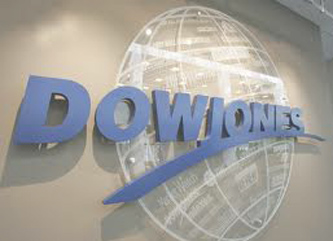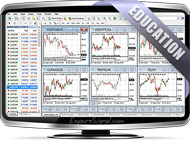- Details
- Stock Market
Fundamental analysis involves examining actual and anticipated demand and supply data to forecast the direction and magnitude of future price movements in the market. This article draws primarily on Van Tharp’s book Trade Your Way to Financial Freedom.
Introduction to Fundamental Analysis
Fundamental analysis serves many purposes. It helps investors estimate the ‘fair value’ of a financial asset. By comparing this fair value to the current market price, investors can gauge how attractive an investment is. Additionally, fundamental analysis aids in setting price targets by providing a general sense of where the market might head—whether you should seek quick profits or hold an asset for a much higher price objective.
-
Fundamental analysis is the key tool for determining ‘fair value.’
-
It generally predicts the direction and magnitude of future price movements.
Read more: Exploring Fundamentals and the Advice of Guru Equity Investors
- Details
- Stock Market
 RUSSEL 2000 (US SMALL CAP ^RUT)
RUSSEL 2000 (US SMALL CAP ^RUT)
Russell 2000 is one of the most popular benchmarks for small-cap stocks. It is widely used by many mutual funds and ETF investors.
The Index
Russell 2000 (^RUT) is a stock market index that measures the performance of the 2,000 small companies listed in the Russell 3000 Index. Russell 2000 serves as the leading benchmark for institutional investors around the globe.
Key Takeaways
- The index started in 1984 and it is managed by FTSE Russell
- Russell 2000 is the most common benchmark for "small-cap" mutual funds
- The index includes about 2,000 small-cap companies
- The Russell 2000 is a subset of the Russell 3000 Index (includes about 96% of the investable US markets)
- Investors can invest in the Russell 2000 via index ETFs or Russell 2000 index mutual funds
- Traders can trade Russell 2000 through futures contracts or CFDs
Chart: Russell 2000 historical chart (6-month candles)

- Details
- Stock Market
Started in July 1988, the DAX-40 is a capitalization-weighted index comprising major blue-chip companies traded on the Frankfurt Stock Exchange.
Key Facts About the German DAX
The DAX consists of 40 large companies listed on the Frankfurt Stock Exchange.
It is well diversified across various sectors of the economy.
Of the listed companies, 37 are domiciled in Germany, 2 in the Netherlands, and 1 in the United Kingdom.
The index is a total return index, using a capitalization-weighted methodology.
Prices are tracked through the Xetra trading venue.
Until 2021, the index included 30 companies and was known as the DAX-30.
Related indices include the MDAX, TecDAX, SDAX, and ÖkoDAX.
In 2022, the total market capitalization of the DAX-40 was approximately 1.6 trillion euros.
- Details
- Stock Market

The Standard & Poor’s 500 (S&P 500)
The Standard & Poor’s 500, or S&P 500, is a float-adjusted, capitalization-weighted index comprising 500 large-cap U.S. companies listed on the NYSE or NASDAQ.
-
Established in 1957, the S&P 500 is maintained by S&P Dow Jones Indices.
-
It is a free-float weighted, capitalization-weighted index.
-
The S&P 500 covers approximately 80% of the available U.S. market capitalization.
-
Companies included in the index are publicly listed on either the New York Stock Exchange or NASDAQ.
-
As of mid-2021, the nine largest companies accounted for 28.1% of the total market capitalization.
-
A committee selects the companies included in the S&P 500 based on specific requirements (listed below).
-
Related indices include the S&P Global 100, S&P Global 1200, S&P International 700, and the S&P/TSX 60 Index.
-
Common ticker symbols are $SPX, US500, GSPC, and INX.
The Short-History of S&P 500
In 1923, the Standard Statistics Company began rating mortgage bonds. Later, in 1926, they created a 90-stock index. In 1941, Standard Statistics merged with Poor’s Publishing to form Standard & Poor’s.
- Details
- Stock Market

The Dow Jones Industrial Average
The Dow Jones Industrial Average, also known as the DJIA, Dow 30, or simply the Dow, is one of the most important financial indices worldwide. It tracks 30 large, blue-chip companies listed on the New York Stock Exchange (NYSE) and Nasdaq. Founded on May 26, 1896, the index is currently owned by the CME Group.
Key Facts About the Dow Jones
-
The Dow 30 monitors the daily price movements of 30 major publicly traded U.S. companies.
-
The companies are listed on both the NYSE and Nasdaq exchanges.
-
The index uses a price-weighted method for its calculations.
-
Common trading symbols for the index include US30, DJI, and DJIA.
-
The Dow is named after Charles Dow, who created the index along with his partner Edward Jones.
-
After the Dow Jones Transportation Average (DJTA), the DJIA is the oldest market index in the United States.
► Official WebSite | ► CME Group




